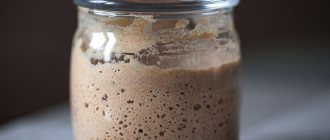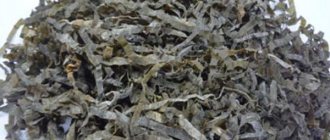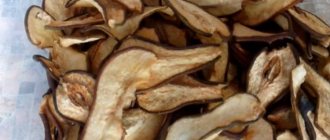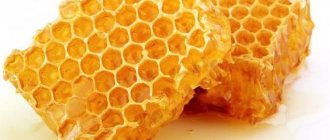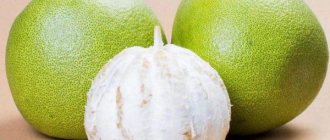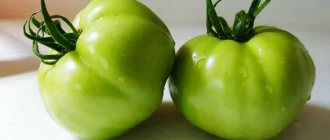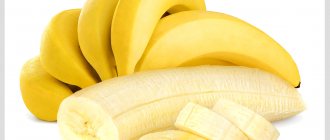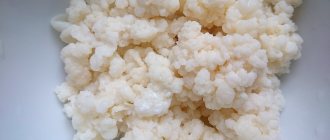What is mastic and what types does it come in?
Confectionery mastic is used to cover cakes, make flowers and all kinds of figures. There are several types of material:
- for applying to the surface of baked goods - sugar;
- for making jewelry and floral elements - floral;
- for creating figures - Mexican.
Novice confectioners can purchase paste in specialized stores for use at home. Experienced craftsmen share numerous recipes for making the product.
Mastic can be prepared at home based on:
- milk;
- gelatin;
- chocolate;
- marshmallows, etc.
Dairy
To prepare the paste, you need condensed or powdered milk. For kneading, instead of flour, use sugar, crushed into powder. The result is a soft and plastic mass that is pleasant to the taste.
- It has a long drying time. This quality is indispensable when you need to cover a cake, make figures and flowers.
- Milk paste has a drawback: if you put a little less powder in it, then the layer on the cake will turn into porridge.
Note to the hostess
To prevent the situation from getting out of control, part of the powdered sugar is replaced with starch.
To prevent the coating from tearing, it should be rolled out no thinner than 2-3 mm, and the powdered sugar in its composition should be very finely ground without sugar grains
Gelatinous
The mastic contains gelatin and powdered sugar. It is suitable for creating large volumetric compositions, flowers, and shapes. The downside is that the paste dries quickly. This creates difficulties in the manufacture of thin and small elements, which break off when dry.
Do you know that…
Gelatin fondant is not suitable for covering a cake because it eventually becomes hard. Good results are achieved by using gelatin paste and marshmallows together.
Chocolate
The following is added to the chocolate variety for decoration:
- chocolate without fillers of any color;
- marshmallow;
- powdered sugar;
- butter.
Mastic is pleasant to work with because it is very plastic and dries well. It is used to make any decoration elements, and is also used to cover cakes. It's delicious on its own. White chocolate produces a creamy paste that can be colored in different colors with food coloring.
Tip of the day
While preparing the chocolate mastic, stir in the powdered sugar carefully. From excess, the mass crumbles.
From marshmallows
Marshmallows are candies in the form of marshmallows or marshmallows that came to us from America. From them, with the addition of powdered sugar, a soft plastic mastic is obtained, which is used to cover the surface of cakes and cut out decorative elements.
If you add more powder, you get a mass for sculpting figures. Colored candies make mastic of different colors.
It is not necessary to look for candies with the name “Marshmallows”, just the word “mallows” on the packaging
Secrets of working with sugar mastic
You should not expect that you will achieve “unearthly beauty” the first time: the art of working with mastic, like any other art, must be learned. There are secrets and tricks here, which can be achieved through trial and error. But why reinvent the wheel? So that you can quickly and efficiently learn how to work with mastic, we have prepared for you the most complete selection of useful tips. So let's get started! How to mix mastic correctly?
There are different types of mastics, and they are all mixed differently. We will dwell in more detail on marshmallow mastic as the simplest (if you don’t know, marshmallows are such candies like “Bon Paris”). To prepare this mastic, you will need, in fact, the candies themselves and finely ground powdered sugar, which will mix into the melted candy mass.
The finished marshmallow mastic should be homogeneous, dense and plastic. To achieve this result, it is important not to overheat the marshmallows (it is enough to heat the candies until they begin to swell and melt). If the sugar mass remains sticky for a long time when kneading, do not stop there: continue mixing the powder until you get the mass of the desired consistency. If our mastic, on the contrary, turns out to be too hard, slightly heat it in the microwave, knead it with your hands and continue kneading. If the sugar-candy paste begins to crumble, add a drop of water or lemon juice to it, then continue kneading again.
How to roll out mastic?
There are two known ways to roll out sugar mastic: on a table sprinkled with starch or powder, and between sheets of polyethylene greased with vegetable oil. The only disadvantage of the first method is that the rolled out layer of mastic will have to be “unstuck” from the table surface and kept suspended. If you choose the second option, you will need to remove the top layer of polyethylene from the rolled out mastic, turn the layer over, evenly cover the cake with it, and only then separate the second layer of polyethylene. However, thin polyethylene (for example, cling film) is not suitable for our purposes: here we need to use something thicker and more substantial, like film for greenhouses.
What to do if the mastic breaks all the time?
You're probably used to rolling out pizza dough and follow the "thinner is better" philosophy. Alas, this trick will not work with sugar mastic. The thickness of the rolled out layer should be approximately 2–3 mm (no thicker is needed either). Thinly rolled mastic has two disadvantages: firstly, it can tear while covering the cake, and secondly, all the “flaws” and unevenness of your culinary masterpiece will be visible under it.
It is also possible that when mixing the mastic you used “coarsely ground” powdered sugar, which contains whole sugar crystals. There’s nothing you can do about it: this mastic will tear even when rolled out.
If the layer with which the cake was covered nevertheless breaks at the most crucial moment, do not despair. Seams, patches and other imperfections can be easily “plastered over” using a wide brush dipped in water. Use this brush to stroke the cake until its surface is perfectly smooth. And if you suddenly find air bubbles under the layer of mastic, try piercing it with a needle in these places, and then carefully smooth out the “holes.” You've probably done something similar if you've ever hung wallpaper.
How to cover a cake evenly with fondant?
Avoiding unsightly folds on the “sides” of the cake is very simple: you just need to roll out the sugar mastic with a large margin (at least 10–15 cm) and so that this margin is maintained around the entire circumference. Then the mastic will stretch under its own weight and lie flat on the cake. After that, take a round pizza knife and carefully cut off “all the excess,” leaving about half a centimeter in reserve. If the sides of the cake turn out wavy, smooth them out using a spatula.
What if the base began to show through from under the layer of mastic?
Most likely, it’s a matter of humidity: sugar mastic is very sensitive to it. Either you used the “wrong” cake layers, or overdid the cake, or did not comply with storage conditions. The finished cake must be stored in a tightly closed sealed box or in a plastic bag (and preferably for no more than 2 days).
What should the cake itself (base) be like?
It is recommended to use dry biscuits, butter cakes or store-bought cakes as the base for the cake. As for the cream under the coating, it is probably easiest to work with marzipan mass. If you don't like marzipan, use classic buttercream, boiled condensed milk or ganache (chocolate buttercream). In this case, you will have to put the cake in the cold for a couple of hours and only then apply a layer of mastic. If the cream does not have time to completely harden, unsightly dents may form on the surface of the cake after coating with mastic.
Under no circumstances use sour cream and all kinds of impregnations (sugar syrup, liqueur, confectionery rum, etc.) for the base. Remember that any mastic dissolves very quickly upon contact with moisture.
How to paint mastic?
It is best, of course, to use special food colorings, but they are not always and not available everywhere. You can replace dyes with regular paints for Easter eggs, but this must be done carefully, since egg dyes usually contain salt, and our mastic should not turn out salty. Therefore, it is better to take not powder paints, but paints in tablets that do not contain salt. If you are categorically against “all chemicals” in food, try natural dyes: spinach juice for green, beet juice for red, carrot juice for orange. It will turn out, of course, not so beautiful, but it will be 100% harmless.
The most difficult thing is to paint the mastic black. To do this, you need to mix as many as three dyes: blue (2 parts), yellow (1 part) and red (1 part). It is very important to strictly observe the proportions, but there is no guarantee that we will get the shade we need - neutral black. Depending on the dyes used, it can be slightly greenish, slightly reddish, or have a purple tint.
Another option for making black fondant is to first prepare brown fondant (for example, with chocolate or burnt sugar), and then add a drop of blue dye to it.
Is it possible to store finished mastic?
Yes, you can! There is nothing in the mastic that could deteriorate in a few days. For storage, it is recommended to carefully pack the mastic in polyethylene or put it in a plastic container with a lid. It is not necessary to put this container in the refrigerator: the mastic just needs to be protected from moisture and air so that it does not dry out ahead of time and does not get wet. By the way, underused marshmallow mastic can be stored in the freezer for up to 2 months.
How to “make” mastic shine?
To make the sugar mastic covering your cake shine, apply a layer of honey-vodka solution (honey and vodka in a 1:1 ratio) on it with a soft brush. Don't worry: the vodka will evaporate quickly and will not affect the taste or smell of the cake.
Aerobatics - figures made from mastic
In fact, it is no more difficult to sculpt figures from well-prepared plastic mastic than from plasticine: no special talent is required. In order to connect different parts of the figures or glue decorations onto a mastic coating, you only need to lightly moisten the gluing area with water. To make colored figurines, it is not necessary to use different colored mastics: you can sculpt figurines from plain white mastic, dry them, and then paint them on top with food coloring. To remove any remaining powder or starch from finished figures, “walk” over them with a damp brush.
Author of the article: Fierce Maria
How long does mastic last?
Decorating baked goods is a painstaking job. The entire mastic coating is not always used. The remaining part is used later. This means you should find out how long the mastic is stored.
Storage of purchased products
Manufacturers of confectionery mastic are interested in long-term storage of their products. For this purpose, preservatives, stabilizers, flavors and other substances that are not very useful for consumers are added to it. When choosing a product in a store, you should pay attention to the composition.
Storage will not cause trouble if you follow certain rules:
- Ready-made mastic is sold in packaging. To work, take part of the mass with a clean spatula. Cover the remaining paste immediately to reduce exposure to air.
- If there are any leftover pieces after decorating, do not throw them away. Wrap leftovers in parchment or foil to prevent sticking.
- The main task during storage is to avoid heat and moisture. Due to elevated temperatures, the mass dries out and loses its plasticity. Hygroscopic in its structure, it becomes liquid from humidity.
- The mastic can be stored in an airtight container for a month. Wrapped leftovers will keep in the refrigerator for a week.
Note to the hostess
If the mastic has lost its elasticity, you can add lemon juice, diluting it with water in a 1:1 ratio.
Storing Homemade Pasta
Recipes for making homemade mastic include natural products, which is important when decorating desserts for children's parties. The risk of allergic reactions is reduced. Their correct ratio allows the product not to deteriorate or lose its properties for a long time.
What to look for:
- Allow the prepared mastic to rest for a day in the refrigerator. Cover the pasta container with cling film and make several cuts. During operation, it will absorb less powdered sugar.
- If the paste turns out wetter than necessary, do not rush to add powder. You can try drying it in a warm kitchen or near a radiator for two hours. You just need to use this mastic right away.
Store homemade pasta for 2-3 weeks.
To make the coating without wrinkles, you need to roll it out with a large margin, then it will smooth out under its own weight
Storing marshmallow mass
Mastic made from toffee candies, like any other, is sensitive to drying out and excess moisture:
- Evaporation of water will lead to loss of elasticity and brittleness. Decorative elements will crumble, making it impossible to form a layer to cover the cake.
- But the absorption of excess moisture will turn the paste into an unsightly mess.
Wrap the mastic in cling film, then in a plastic bag. In a closet at a temperature no higher than 25 degrees, supplies will last 3-4 days. If you put them in the refrigerator, nothing will happen to them for 2 weeks.
Do you know that…
If marshmallow mastic is purchased in a store, it can be stored for 6 months at a temperature no higher than 3-5 degrees. The long period is explained by the presence of preservatives in the composition.
Storing finished cake decor
Ready-made decorative figures from culinary mastic for decorating confectionery products can be prepared in advance and stored for a long time. Decorating fresh baked goods in this case is not a short process.
Small parts intended for storage, such as flowers, leaves, lace plates, must be thoroughly dried and carefully placed in dry cardboard boxes in which the possibility of damage will be excluded.
At room temperature, storage of small mastic products is possible for up to 2 months. Larger forms - houses, figurines of birds, animals - should be placed in the refrigerator.
How and where to store the product at home
To preserve mastic, regardless of whether you bought it or made it at home, you need:
- Pack the product in a container with an airtight lid and put it in the refrigerator; this way it will keep for 2 weeks.
- After consumption, combine the pieces, shape them into a ball or oval, wrap tightly in film, then in a plastic bag and put them on the bottom shelf of the refrigerator; they need to be used within a week.
- Keep away from vegetables and open containers with liquids.
- When you need to use the mastic again, remove it from the refrigerator in advance and keep it at room temperature for 10-12 hours to soften; then mix thoroughly, this will restore its elasticity.
- The product can be stored at room temperature in an airtight container for 3-4 days.
To make the mastic on the cake shine, it is greased with a solution of honey in vodka in a 1:1 ratio.
After finding out how long mastic can be stored in the refrigerator, you need to understand whether it can be frozen. Experts assure that confectionery paste can be stored in the freezer for 2-3 months. How to do it:
- Divide the lump into small portions.
- Wrap tightly in plastic wrap, plastic bag, foil, parchment, or place in a container with an airtight lid.
- Place in the freezer.
To proceed, defrost gradually: first place on the refrigerator shelf overnight, then leave at room temperature until warm. Knead well before use.
Note to the hostess
To speed up heating, you can place the mastic mass in the microwave or hot oven for a few minutes. Just make sure it doesn't start to melt.
How to soften cake mastic?
Do not rush to throw away dried pastry mastic. The sugar mass can still be revived and used for its intended purpose. To do this, place it in an airtight container and place it in hot water or heat it in the microwave. After this, stir the mass thoroughly and add a little powdered sugar if necessary.
For our beloved readers, a 10% discount using the promotional code BLOG on all products weighing up to 15 kg in the online food ingredients store 100ing.ru! Delivery and pickup throughout Russia.
How to store mastic cakes
Mastery in making mastic cakes comes gradually. Each test of your strength will be better than the previous one. A cake using mastic decoration is prepared in advance, because it is not known how long this or that operation will take. The main thing is to preserve the resulting beauty before the celebration begins, so it is important to know how to store a cake covered with mastic.
Application technology
To avoid trouble, you need to properly coat the cake with paste:
- You should not be overzealous with soaking the cakes. The excess moisture will cause the mastic to melt. Sponge cakes covered with a mastic layer behave ideally.
- The top cake should be dry. To do this, it is coated with ganache, marzipan layer or butter cream. The coating must dry or harden. In the case of cream, the cake is placed in the refrigerator.
- The mastic should not be overdried, otherwise it may warp and crack not only during cutting, but also during storage.
For a master class on how to coat a cake, watch this short video:
Place and period of storage
Let's figure out where to store the mastic cake:
- The cake, covered with fondant, is placed in a closed box. It should be stored in the refrigerator or other cool place.
- Half an hour before serving, remove the cake to allow the coating to warm and become pliable when slicing.
Note to the hostess
Droplets of condensation may form on the dessert. Nothing wrong with that. They are carefully blotted with a napkin.
It remains to be clarified how long a mastic cake can be stored. Confectionery paste is sensitive to elevated temperatures.
- During a festive feast, the dessert will lose its appeal within a few hours. Therefore, it is served just before consumption.
- If the room is cool, this period will extend.
- You should not keep a mastic cake in the refrigerator for more than 2 days.
Storage of purchased product
Decorating a cake is a very painstaking job. Usually the baked goods are made first, and only then they start decorating them. Therefore, it is important to know how the mastic is stored correctly and what its shelf life is.
Every manufacturer of such products is interested in having a long shelf life. For this purpose, preservatives and stabilizers are added to the finished mastic. These substances are not very healthy, and therefore, when choosing a product in a store, you should read its composition.
Storing mastic will not cause any trouble if you follow simple rules:
- Store-bought product should only be stored in its packaging. During operation, take the mass with a spatula. The remaining mastic must be immediately covered so that it does not come into contact with air.
- If there are pieces left after decorating, simply wrap them in foil so that they do not stick.
- The main task when storing pasta is to avoid heat and moisture. Due to the heat, the mass will quickly dry out and lose its elasticity. High humidity will cause the paste to become runny.
- In an airtight package, the product can be stored well for a month. Wrapped leftover mastic should be stored in the refrigerator for no more than a week.
If the paste loses its elasticity after storage, you need to add a little pure lemon juice to it. You can even mix mastic with juice in a 1:1 ratio.
How to store mastic figures
Decorative elements are made before baking the cake begins. This painstaking work takes a lot of time. Then they are dried, otherwise the figures on the cake will become deformed.
Parts of the holiday theme are first cut out of colored fondant for contrast. By using food coloring or coloring with vegetable juices, bright, rich colors are obtained. You will learn how to do this from the video:
- Store finished parts in a closed box so that they do not touch; Place in a plastic bag with an airtight lid and store in a closet. Large figures can be placed in the refrigerator on the bottom shelf.
- It is best to decorate the cake a few hours before the celebration, so that the details do not become damp or lose their shape. You can glue them using egg white mixed with a teaspoon of powdered sugar or thick sugar syrup.
Sugar mastic is a great way to decorate dough confectionery products. Knowledge of the subtleties and nuances of working with it will be useful for both novice confectioners and professional masters.
Store correctly and be healthy!
Storing mastic prepared independently at home
The shelf life of homemade sugar paste differs to a lesser extent from the same parameter for industrially produced mastic. This is due to the fact that culinary mastic prepared by the housewife at home does not contain preservatives that extend the shelf life of the sugar paste.
But mastic, prepared independently, can be used without restrictions for making or decorating any confectionery products, because the housewife knows exactly what ingredients have been added to the product, and has the opportunity to make sugar paste using only natural ingredients.
To achieve an absolutely uniform structure and increase the plasticity of homemade sugar paste, it is recommended to let it stand in the refrigerator for a day after preparation. Before this, the mastic is placed in a container covered with a film with several holes.
If after such settling it turns out that the mastic is not thick and viscous enough, you can thicken it by placing it in a warm, dry place for a short time to evaporate excess liquid.
Types of mastics
There are many types of mastics, and each has its own characteristics.
- Sugar. It is based on powdered sugar and gelatin. A mass that is difficult to mix and achieve the correct consistency, but of all types it is the most resistant to moisture.
- Marshmallow based mastic. How long do flowers made from mastic last and what is the shelf life of mastic-covered flowers in the refrigerator? No more than a week, while marshmallow mastic can last for several months in the freezer.
- Floral. Suitable for small parts and decorations, holds its shape well. It uses stabilizers and dyes. How long is it stored? Thanks to stabilizers, the cake coating lasts longer - a month to a month and a half.
- Mexican or modeling. I always keep the recipe on hand. Ready-made mastic is short-lived - the figures are prepared in the morning and this cake mastic can be stored for no more than 3 days. Ideal for covering wedding cakes that need to retain their shape.
Jewelry made from mastic is a win-win option
Any cake can be covered with sweet mastic; this will help maintain the moist texture of the cakes, the freshness of the cream and easily eliminate all the unevenness of the cake. You can make decor from the same mastic by adding a little multi-colored dyes. Cakes are a huge success at various celebrations - children's birthdays, weddings and anniversaries; you can create a unique decor on the cake that guests will remember.
- The easiest way to make a sugar mixture is to combine powdered sugar, water and marshmallows. Often, honey or honey sweetener is added to improve the taste and give an interesting taste. The mass acquires a beautiful shade and becomes smoother, the surface of the cake becomes shiny and glossy. Most people do not know how to prepare mastic and buy ready-made ones. But doing it with your own hands is not very difficult even if you are not a professional.
- At home, you can use marshmallows, which, when melted, make it possible to distribute the mass over the surface of the cake. The main thing to remember is that the main thing is to show imagination when working with the sweet mass, to use additional decor and fruit.
How to roll out mastic
The main thing in rolling out the mastic is that it is even, smooth and fits well on the product. Basic Rules:
- Use a table with a smooth surface or a special plastic board. It is necessary for better rolling and will not stick to the surface;
- Roll out the mastic using a rolling pin. Be sure to sprinkle it and the board with powder or starch;
- Polyethylene sheets. An excellent method for a beginner, it allows you to roll out the mastic evenly and thinly. And using one sheet, carefully place it on the cake.
